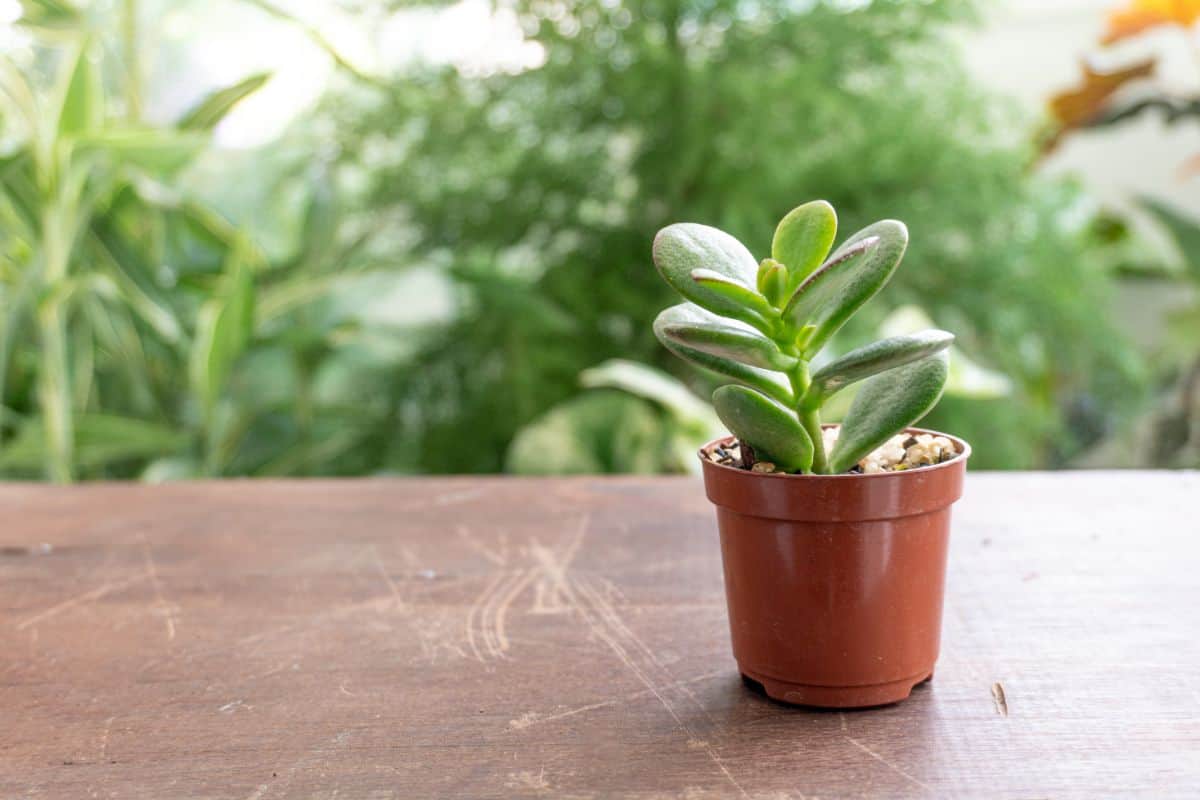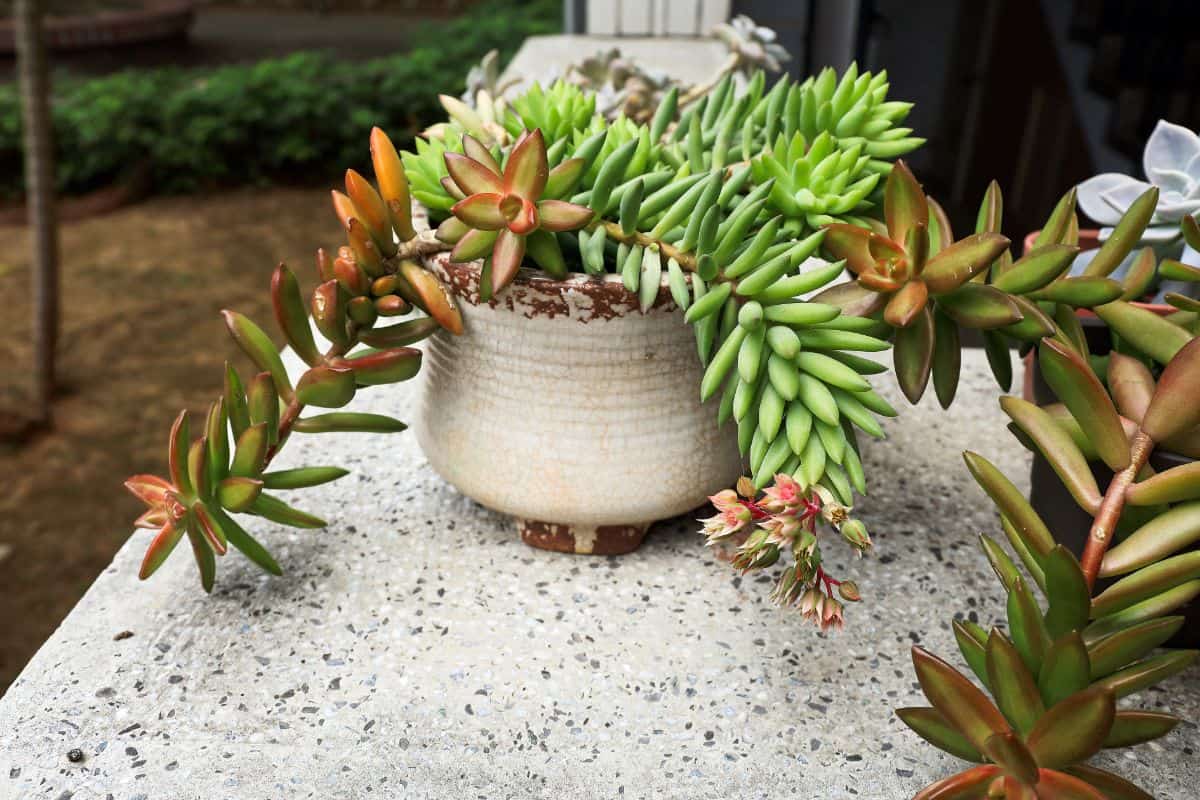We can probably all agree that one of the reasons succulent plants are so popular is that they are low-maintenance. They can thrive and survive even with minimal care.

They’re pretty resilient as plants, and since they’re drought-tolerant, they’ll be able to withstand a little bit of neglect. That said, they still need an ideal environment and adequate care to grow healthy and happy.
Fortunately, succulents are very expressive as well. They’ll show tell-tale signs when they’re suffering.
Catching the earliest signs is essential to prevent making further mistakes and ending with an unhealthier and worse-looking plant. One such sign is the gradual stretching of your otherwise compact succulent plants.
Are you wondering what to do when succulents get too tall? Then you’re in the right place. We'll talk about the possible solutions to succulent legginess.
Jump to:
Let’s Talk About Succulent Etiolation
Legginess is the common term for what is scientifically referred to as etiolation. While it’s understandable why many people think of it as a disease since it does significantly change how your plant looks, right? However, it’s not.
More accurately, you should consider it as a plant’s survival mechanism instead. It is a natural process that takes place when a plant is light-deprived.
The Main Cause of Succulent Etiolation
Light deprivation forces a plant to elongate its stem and grow towards the nearest light source to fulfill its needs. Other factors that can also lead to etiolation are the current temperature and the amount of water that your succulent is exposed to.

Simply put, if the plant feels warm and receives a lot of water, this can trick the plant into thinking that it’s in an active growing season. Thus, your plant can get further encouraged to grow towards a sunny spot in its immediate environment.
That said, please don’t think that depriving your succulent plants of water will solve the issue. It will only encourage your plant to take the moisture that it needs from its older leaves and stems, making matters even worse.
No products found.
In addition, it’s important to note that this doesn’t just happen to indoor plants alone. Even outdoor plants can suffer from legginess, especially if they’re planted in a shadier spot in your garden (or if taller plants are covering them).
Finally, we know that you’re probably considering moving your plant to a sunny spot.
Honestly, that is a great solution. It is ideal to do your research first, though.
Identify your succulent plant and check out its plant description. The variety of plant will determine its ideal amount of light per day.
Don’t forget that some succulent plants are vulnerable to intense and direct light.

Can You Stop It?
Yes, you can. Instead of just placing it under direct light that can potentially burn the delicate leaves, we recommend bright yet indirect light instead.
You can also consider getting a grow light if you don’t have an ideal spot at home.
Grow lights are special lights designed to provide adequate sunlight. They're also a great tool to have to get your succulent leaves back to their original color.
After all, light deprivation can also make your plant look pale and lackluster as well.
Can You Reverse It?
Unfortunately, no. There’s no way for a leggy plant to shrink back to its original compact form once it has already grown out of it.
Can You Prevent It?
Yes, absolutely! A simple solution is to move it to a brighter window.
The sunniest window will depend on your location, of course, so you have to determine the best spot on your own. You can also check out our earlier post on etiolation to learn more about key prevention methods.
On the other hand, if your succulent plants are outside or there’s no way for you to move around their pot since they’re part of a bigger arrangement, then you can also consider replanting it in its own spot.
Not only will it give it a bit of space, but it will also keep other plants from accidentally covering their fair share of sun.
What to Do When Succulents Get Too Tall
So, if there’s no reversing this unwanted growth activity, what are the options available? There are two.
You can adjust the growing conditions of your succulent plants and just accept your plant for its new and taller look, or you can divide your mother plant for propagation.

If you have chosen the second route, then don’t feel guilty. You can still save the beauty of the original plant.
You can do so by beheading its crown. Use a clean, sharp knife or pair of scissors to do so if you don’t have pruning shears.
Leave a bit of stem underneath the crown. It should preferably be long enough to support the plant once it develops new roots, but at the same time, it shouldn’t be too long that your “new” plant will appear leggy once planted anew.
You should also remove the bottom leaves, especially if you plan to root the crown in water. Doing so can prevent rotting and disease and free up your plant’s nodes.
These are the points where the leaves are attached and where your new roots will grow.
As for the remaining stem, you can maximize this propagation method further by removing the remaining green and healthy leaves. These leaf cuttings can also root.
Be careful in removing them, though. Torn leaves probably won’t root.
Once you have these cuttings ready, the next step is to allow their wounds to be callous over. This is another step that can prevent rotting and mold growth.
You now have the choice to either root your crown in water or soil. Meanwhile, you can lay leaves on moistened soil to root.
We recommend using a succulent soil mix for this purpose. It’s a well-draining soil mix that’s specifically formulated for succulent growth.
Finally, there’s no need to pull the base stem off the pot. If you continue caring for it, then there’s a chance that it can sprout new pups depending on your plant’s variety.
Prevention Is Better Than Solutions
Don’t let legginess be the end of your plant story. Instead, you can take this opportunity to grow your plant collection further.
While there’s no way to reverse longitudinal growth and bring back your succulent to its rosette-shaped growth, you can remove the crown of your main plant and harvest leaf cuttings to grow new plants. Just make sure to give your new succulent plants adequate sunlight this time around.
After all, you can be sure that the lack of sunlight will result in etiolation again. Let’s keep that from happening. In the end, prevention will always be better than any of the solutions we’ve shared above.

